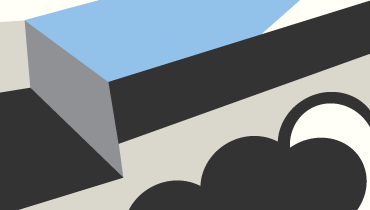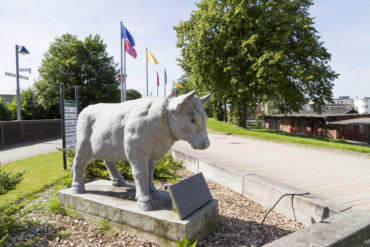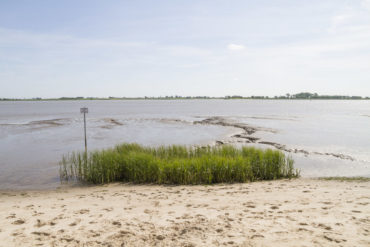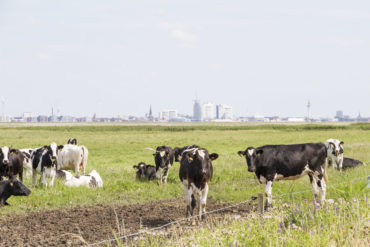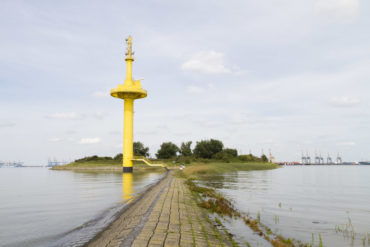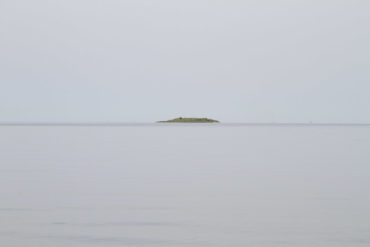On one of the only days of sun we’d experienced that summer, we finally made use of a car-sharing scheme we had joined. Tom drove us to the Weser estuary at Nordenham.
We had missed Nordenham on our previous visit to Butjadingen, but I was interested in the town, as I had read that it had grown from the cattle trade in the 19th century, sending livestock from here to England.
The so-called founder of the town, Wilhelm Müller, is known for organising the building of the Ochsenpier (or “ox pier”) in 1857 enabling cattle to be transferred on to ships. As the shipping trade grew through the late 19th century, the dwelling-mound villages of Atens, Blexen and Einswarden (incidentally, all of which had been devastated by the Christmas flood of 1717) became incorporated into the former estate of Nordenhamm. The final “m” was supposedly dropped to make the town sound more like somewhere in England, as a friendly gesture to traders from the other side of the North Sea.
Tom was more interested in the riverside beaches but was disappointed when we realised that swimming was strictly prohibited. We stopped for a light meal by the river and walked a little around the town, which seemed sadly quite run down.
We then drove to the village of Tossens where we parked the car, crossed over the dyke and walked back toward Blexen. Tom had read about the artificial islands of Langlütjen, which had been built in the 19th century as forts for the Prussian military, to protect the ports of Bremen and Bremerhaven. He said we could follow a causeway, formerly used by tanks, to cross on to the closest of these, Langlütjen I.
The tide was high and only a narrow stretch of bricks took us across toward the island. The water was incredibly calm with terns hovering above us and swooping into the shallow sea. I am no ornithologist, but I convinced myself they were arctic terns, which are known to migrate the longest distances in the animal kingdom.
When we reached the island, we couldn’t proceed past the 1980s radar tower, as a fence blocked our path with signs saying “private”, “no entry”, “beware of the dog”. A man who seemed to have been hiding, waiting for trespassers, came out and explained it was private property. He said there was nothing for us to see, and we should give up and go back.
Langlütjen II, he said, would be more interesting and we should instead go there on an organised excursion.
